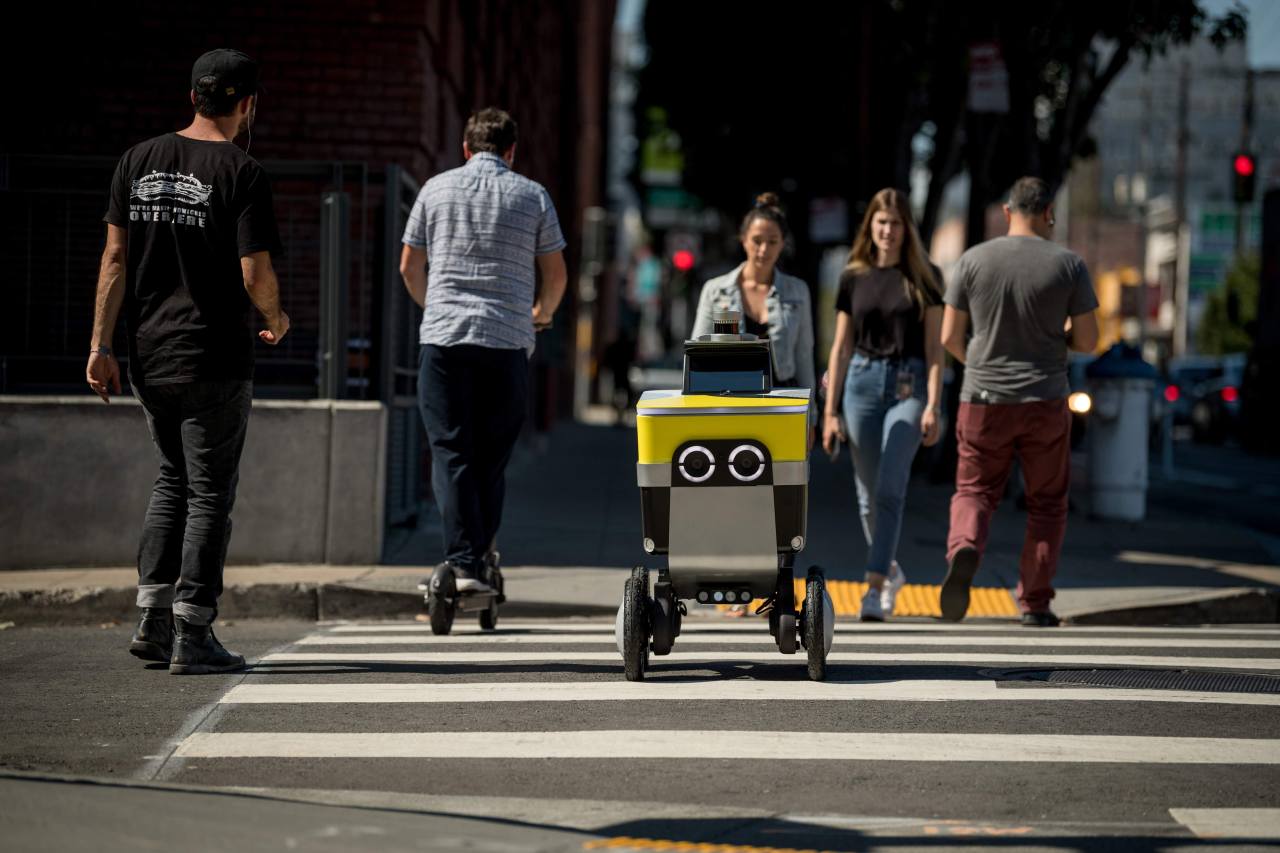The digital age is buzzing with the advancement of artificial intelligence (AI) and robotic technologies, making our lives more convenient yet raising profound questions about their integration into daily society. A recent event in Los Angeles shed light on these challenges, where a sidewalk delivery robot crossed a yellow caution tape, entering a police crime scene—an incident that quickly became a viral sensation. This situation ignited debates about robotic autonomy and, more importantly, human intervention in autonomous systems.
The Incident: Robots in the Line of Duty
This curious event took place around 10 a.m., when a food delivery robot from Serve Robotics found itself hovering on a street corner near Hollywood High School while a potential school shooting incident unfolded. With its sensors arguably operating efficiently, the robot seemed perplexed until a human operator intervened. Eyewitness William Gude posted the video online, highlighting how the robot was seemingly waved through the police caution tape by bystanders. Did the robot err, or was it simply following the directives of human control?
The Anatomy of Human-AI Collaboration
- Human Oversight is Key: Serve Robotics emphasizes human intervention in its operational framework. While the robot possesses Level 4 autonomy, it still requires human input to navigate certain scenarios. CEO Ali Kashani confirmed that the robot wouldn’t have crossed the line without explicit human consent.
- The Dilemma of Decision-Making: Interestingly, the confrontation posed by the humans waving the tape led to a critical, albeit flawed, decision by the human operator. This sparked discussions regarding the necessity of training human operators to make safer choices, especially in chaotic environments like crime scenes.
- Expanding Software Capabilities: The mishap has led Serve Robotics to reconsider its operational protocols. By refining software capabilities, they aim to equip robots with enhanced situational awareness—thinking beyond the immediate context, thus reducing reliance on human judgment where biases can come into play.
Recommendations for Future Developments
The lessons learned from this incident extend far beyond the streets of Los Angeles. To enhance the collaboration between robotic systems and human operators, here are some paths worth exploring:
- Enhanced Communication with Law Enforcement: Initiating real-time data transfers between robots and police could allow robots to route autonomously around incidents, steering clear of sensitive areas.
- Differentiate Human Interaction: Improving AI’s ability to detect human gestures and intentions could mitigate erratic behaviors, ensuring that robots do not blindly follow commands that breach safety protocols.
- Robust Training Programs: Enhancing the training of human operators to understand the capabilities and limitations of robotic systems is crucial, paving the way for better decision-making under stressful circumstances.
Conclusion: Bridging the Gap between Technology and Humanity
The unfolding narrative surrounding this robot and the human influence highlights the pressing need for a balanced approach to AI deployment. As we witness the evolution of autonomous systems, it’s evident that human judgment and machine intelligence must operate in tandem—ideally complementing rather than compromising safety. At fxis.ai, we believe that such advancements are crucial for the future of AI, as they enable more comprehensive and effective solutions. Our team is continually exploring new methodologies to push the envelope in artificial intelligence, ensuring that our clients benefit from the latest technological innovations.
For more insights, updates, or to collaborate on AI development projects, stay connected with fxis.ai.

